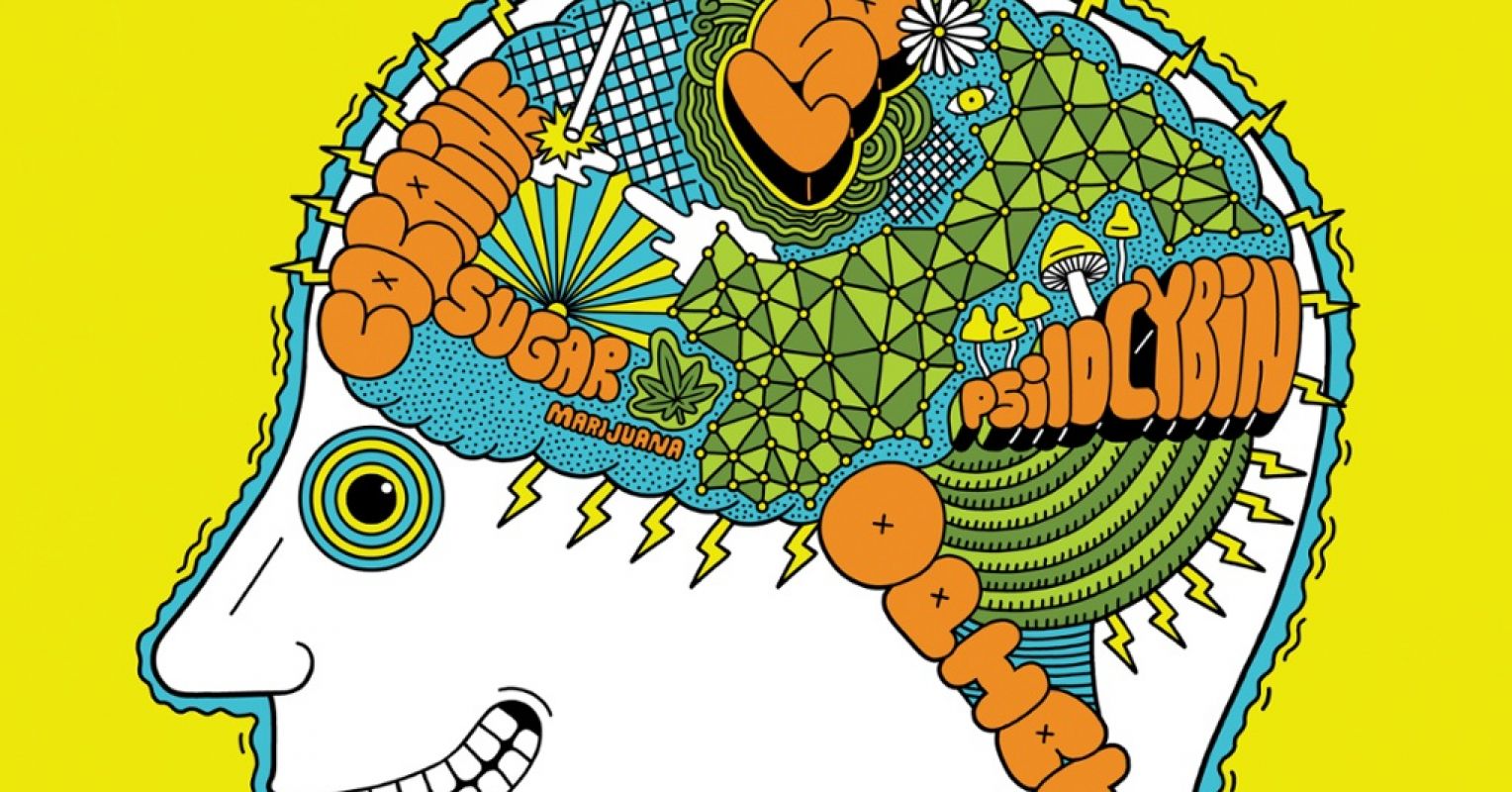Week 7: Neuroscience + Art
This week's topic on neuroscience excited me because it's one of the areas of study that I find interesting. As a psychobiology major, I am drawn to subjects that seek to examine the inner workings of the mind, questioning the mechanism behind our perception or mental states. As such, learning about the effect of drugs and how widespread (and legal) they once were is fascinating--it reflects the progression we've made in terms of neurological/psychological discovery, as well as the shift in culture from largely pro-recreational drugs to vehemently anti-drugs.
 |
| Your Brain on Drugs - Serge Seidlitz |
Giovanni Frazzetto and Suzanne Anker’s article on “Neuroculture” helped me bridge the gap in the relationship between neuroscience and art; in their text, they state that the interaction between the two disciplines helps to “make the scientific community and the public aware of the social and ethical implications of the scientific advances in neuroscience” (Frazzeto and Anker). We are currently witnessing a growing culture of the circulation of neuroscience theories/finds through artistic representations of the brain and human behavior.
One such artistic representation of the psychology behind drugs is found in Darren Aronofsky's Requiem for a Dream. The drama centers around four people whose lives spiral out of control as their substance abuse worsens; from prescription drugs, methamphetamine, and cocaine, Aronofsky captures the ramifications of such drugs as we witness the protagonists delve further into delusion and paranoia as the film progresses. Common imagery shown when the protagonists are doing drugs is a close-up shot of their eyes dilating.
 |
| Requiem for a Dream - Movie Poster |
LSD is another drug that causes dilation of the pupils and, according to a study, “heightened mood, psychosis-like symptoms” and two weeks after use, “increased optimism and trait openness” (Carhart-Harris). Although the study of hallucinogenic/psychedelic drugs on the mind remains controversial, I believe that it is as important as many other opportunities of study. Like recent studies confirming the medicinal uses of marijuana, such as pain and anxiety relief, we can simultaneously find practical uses for similar drugs while raising awareness of the dangers of addiction as well as their effects on the mind.
References:
Carhart-Harris, R L et al. “The paradoxical psychological effects of lysergic acid diethylamide (LSD).” Psychological medicine vol. 46,7 (2016): 1379-90. doi:10.1017/S0033291715002901
Frazzetto, Giovanni, and Suzanne Anker. “Neuroculture.” Nature Reviews Neuroscience, vol. 10, no. 11, 2009, pp. 815–821., doi:10.1038/nrn2736.
NIDA. "Media Guide." National Institute on Drug Abuse, 2 Jul. 2018, https://archives.drugabuse.gov/publications/media-guide.
Taher, Fatema. “Requiem for a Dream: An Analysis.” Medium, Medium, 26 Aug. 2020, https://medium.com/@fatemataher019/requiem-for-a-dream-an-analysis-ae95eb43a38.
Vesna, Victoria. “Neuroscience pt3” YouTube, YouTube, 16 May 2012. https://youtu.be/E5EX75xoBJ0
Image References:
Aronofsky, Darren. Poster for Requiem for a Dream. Artisan Entertainment, 2000.
Garofalo, Sara. “Ted-Ed: How do drugs affect the brain?" YouTube, YouTube, 29 June 2017. https://youtu.be/8qK0hxuXOC8
Seidlitz, Serge. “Your Brain on Drugs.” Bernstein & Andriulli Inc. 2017. https://www.psychologytoday.com/us/blog/balanced/201906/is-your-brain-drugs

Hi Anna, it's great that you brought up Requiem for a Dream and included the TED-Ed video in your post! Making movies and videos about a topic is one of the best ways to inform people on a certain subject, such as the dangerous cycle of addition. I think that a reason why some people suffer from substance abuse is because the truth is that drugs affect everyone differently. Some people are more susceptible to certain drugs or may have a genetic predisposition that causes them to react especially poorly. But others are able to lead relatively normal lives with recreational drug use. If someone doesn't know what type of person they are in that regard, they may believe it is okay for them to do drugs when in reality their brain chemistry may be permanently changed.
ReplyDeleteHi Anna -
ReplyDeleteI agree that neuroscience is so fascinating! I am actually taking Psych 15 (psychobiology) right now, and I found that this topic aligned well with the Psych 15 topics. I think it is fascinating to explore how neuroscience and the topic of psychopharmacology and drug addiction can be visualized through art. In Psych 15, we just covered the psychopharmacology unit. It is interesting the effects different drugs have on different parts and lobes of the brain, and to explore the potential for therapeutic benefit versus negative aspects (i.e., addiction, psychosis). This unit allowed me to look at psychopharmacology from a new lens. Great post!
-Julia
I really loved reading your blog post for this weeks topic! It really enlightened me on how drug addiction can be seen through an art lens more than a health and mental problem. Using drugs can alter your reality and of course there are bad effects but isn't an altered reality an art form? It was also interesting how drugs can attack certain parts of your brain and not the brain as a whole. Overall this was a great blog to read !
ReplyDeleteI enjoyed reading your response this week, especially because you spoke to the cultural shift from largely pro-recreational drugs to anti-drugs. I think this is largely due to the advancements in technology that allows for specialists to see how these drugs (LSD and Cocaine specifically) effect how our brains work.
ReplyDelete